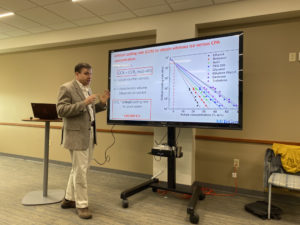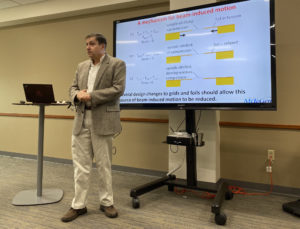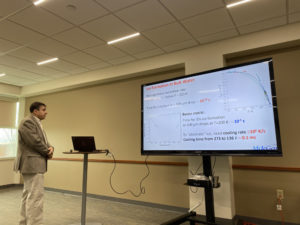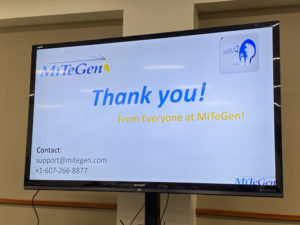On November 19th 2019, Professor 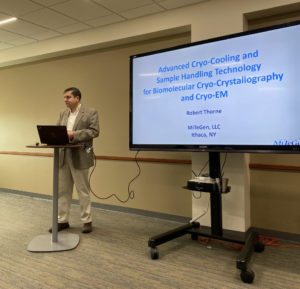 Rob Thorne Chairman, CTO and Founder of MiTeGen presented Advanced Cryo-Cooling and Sample Handling Technology for Biomolecular Cryo-Crystallography and Cryo-EM as a Tuesday Tech Talk on the Yale West Campus.
Rob Thorne Chairman, CTO and Founder of MiTeGen presented Advanced Cryo-Cooling and Sample Handling Technology for Biomolecular Cryo-Crystallography and Cryo-EM as a Tuesday Tech Talk on the Yale West Campus.
This talk discussed fundamental concepts underlying how biomolecular crystals respond to cryocooling; their impact on biomolecular structure determination using X-ray and electron based methods; and technologies available from and being developed by MiTeGen for cryo-crystallography and serial synchrotron crystallography.
Learn More about Advanced Cryo-Cooling and Sample Handling Technology for Biomolecular Cryo-Crystallography and Cryo-EM
Automated, ultra-fast cryocooling can be used to improve crystal diffraction, eliminate ice and cryoprotectant, reduce non-isomorphism, and prevent sample damage.
In biomolecular X-ray crystallography, crystals are routinely cooled to cryogenic temperatures via plunging into liquid nitrogen. The procedure of manual plunge cooling into open Dewars of liquid nitrogen is widely used, but the impacts of this uncontrolled, highly-variable cooling process is often overlooked.
Even in highly-experienced hands, plunging crystals by hand results in non-optimal cooling rates, as the majority of sample cooling is occurring in the cold gas layer above the liquid. This slow cooling can lead to ice formation, which severely degrades protein lattice diffraction and can produce significant diffraction noise. To compensate for these issues, researchers often use high concentrations of cryoprotectant, which in itself can damage crystals.
NANUQ™, an automated crystal cryocooling device utilizing cold-gas removal and ultra-fast plunging, the system produces cooling rates of 50,000 K/s for 50 micrometer crystals. Rapid cooling reduces the need for cryoprotectants, more accurately captures the biologically relevant structure, and dramatically improves reproducibility. Automated sample handling and storage eliminates crystal damage and ice formation that can occur during manual handling.
Fill out the contact form below to learn how you and your organization can find out more about Cryo-Cooling and Sample Handling for Cryo-EM & Crystallography
Learn More About NANUQ
- Watch our video on How To Improve Crystal Diffraction With Optimized Cryocooling
- Visit our NANUQ product page - The device that's behind improving crystal diffraction with optimized cryocooling
- Learn how you can try NANUQ either in person or by sending us your samples
